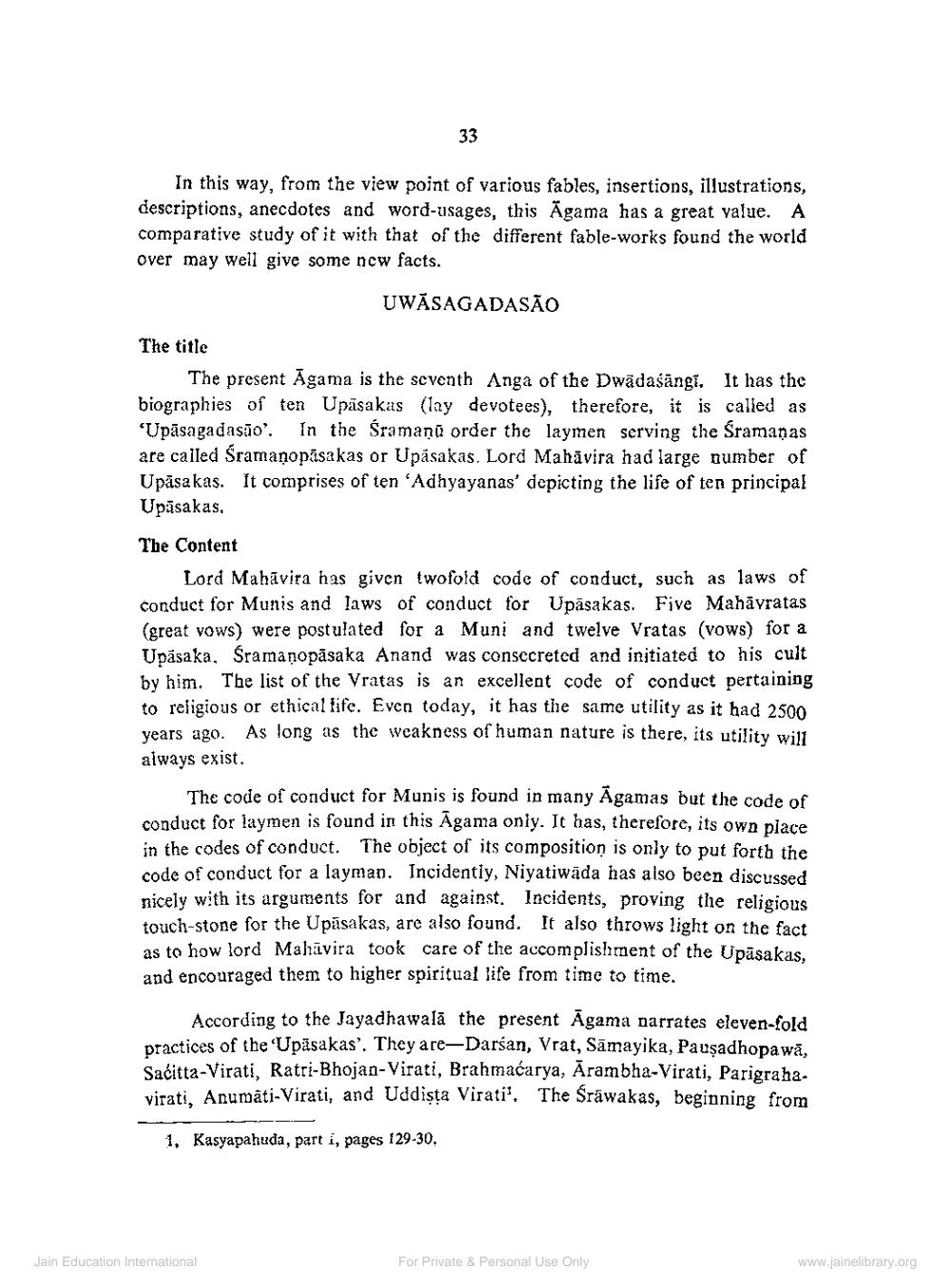________________
33
In this way, from the view point of various fables, insertions, illustrations, descriptions, anecdotes and word-usages, this Agama has a great value. A comparative study of it with that of the different fable-works found the world over may well give some new facts.
UWASAGADASÃO
The title
The present Agama is the seventh Anga of the Dwadasängi. It has the biographies of ten Upasakas (lay devotees), therefore, it is called as "Upāsagadasão". In the Sramano order the laymen serving the Sramapas are called Śramanopisakas or Upasakas. Lord Mahāvira had large number of Upasakas. It comprises of ten 'Adhyayanas' depicting the life of ten principal Upasakas.
The Content
Lord Mahavira has given twofold code of conduct, such as laws of conduct for Munis and laws of conduct for Upäsakas. Five Mahāvratas (great vows) were postulated for a Muni and twelve Vratas (vows) for a Upasaka. Sramaṇopāsaka Anand was consecreted and initiated to his cult by him. The list of the Vratas is an excellent code of conduct pertaining to religious or ethical life. Even today, it has the same utility as it had 2500 years ago. As long as the weakness of human nature is there, its utility will always exist.
The code of conduct for Munis is found in many Agamas but the code of conduct for laymen is found in this Agama only. It has, therefore, its own place in the codes of conduct. The object of its composition is only to put forth the code of conduct for a layman. Incidently, Niyatiwada has also been discussed nicely with its arguments for and against. Incidents, proving the religious touch-stone for the Upisakas, are also found. It also throws light on the fact as to how lord Mahavira took care of the accomplishment of the Upasakas, and encouraged them to higher spiritual life from time to time.
Jain Education International
According to the Jayadhawala the present Agama narrates eleven-fold practices of the 'Upasakas'. They are-Darsan, Vrat, Sämayika, Pauṣadhopawa, Saćitta-Virati, Ratri-Bhojan-Virati, Brahmacarya, Arambha-Virati, Parigrahavirati, Anumati-Virati, and Uddista Virati. The Śrawakas, beginning from
1. Kasyapahuda, part i, pages 129-30.
For Private & Personal Use Only
www.jainelibrary.org




